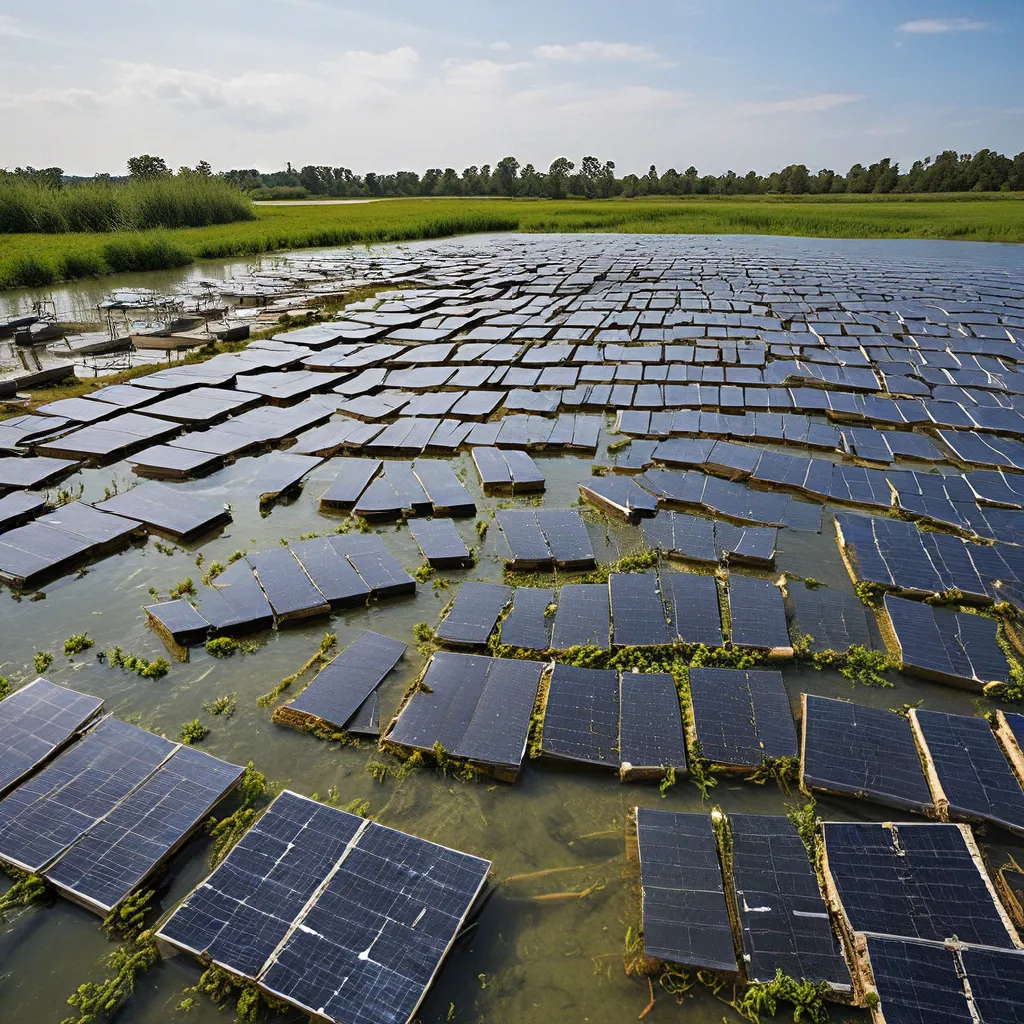
Ah, the wonders of aquaculture – cultivating fish and other aquatic creatures in a controlled environment. It’s a marvel of modern agriculture, but you know what makes it even better? When you harness the power of the sun to do it! That’s right, folks, solar-powered aquaculture is where it’s at.
The Solar-Aqua Revolution
I remember when I first heard about the concept of using renewable energy to power fish farms. I was like, “Wait, what? You can grow fish using the sun?” It just seemed too good to be true. But let me tell you, once I started digging into the details, I was completely hooked (pun intended!).
You see, traditional aquaculture operations require a ton of electricity to run all the pumps, aerators, and other equipment needed to keep those fish happy and healthy. And where does that electricity usually come from? Yep, the good old fossil fuel-guzzling power grid. Not exactly the most sustainable approach, am I right?
But then along came the solar panel – the eco-friendly, renewable energy superhero that’s here to save the day. By installing a solar photovoltaic (PV) system, aquaculture operations can generate their own clean, renewable electricity to power all those critical components. It’s a match made in heaven (or should I say, under the sun?).
The Aqua-Solar Checklist
Now, I know what you’re thinking – “Okay, this solar-powered aquaculture thing sounds great, but how do I actually make it happen?” Well, my friend, let me walk you through the key considerations.
First and foremost, you gotta make sure you’ve got the right location for your solar array. We’re talking full sun exposure, no shady business allowed. And the direction the panels face is crucial – north of the equator, they should be facing true south, while south of the equator, they need to face true north. Getting the angle just right is also important for maximum efficiency.
Next up, you’ll need to determine the power requirements of your aquaculture system. How much water flow do you need? What kind of pumps and aerators are you using? All of these factors will play a role in sizing your solar array and battery storage. Dankoff Solar’s handy pump charts can be a lifesaver when crunching those numbers.
And speaking of batteries, you’ll definitely want to invest in a high-quality battery bank to store all that sun-powered juice for when the clouds roll in or the sun goes down. Flooded lead-acid, gel, and absorbed glass mat batteries are all solid options, each with their own pros and cons. Do your research, talk to the experts, and choose wisely.
Aqua-Solar Success Stories
Now, I know what you’re thinking – “This all sounds great, but is it really working in the real world?” Well, let me tell you about one aquaculture operation that’s absolutely crushing it with their solar-powered setup.
Meet the Lashto Fish Farm in Haiti. These folks have a massive 63-panel, 14.5 kW solar array powering six 12,000-gallon fish tanks, where they’re raising thousands of tilapia fingerlings each year. The solar panels not only provide the juice to run the pumps and aerators, but they also help shade the tanks, reducing water evaporation and algae growth. Talk about a win-win!
And they’re not the only ones getting in on the aqua-solar action. Over in India, researchers have been exploring the use of PV power for aeration in fish ponds, showing impressive results in terms of improved water quality and increased fish yields. It’s proof that this technology is making waves (pun totally intended) in the aquaculture world.
The Sustainable Aqua-Frontier
So, what does the future hold for solar-powered aquaculture? If you ask me, the possibilities are endless. Imagine a world where every fish farm, hatchery, and aquaculture operation is running on clean, renewable energy. No more reliance on the grid, no more fossil fuel-based power – just pure, unadulterated sun-powered goodness.
And the best part? It’s not just about the environmental benefits. Solar-powered aquaculture can also be a total game-changer when it comes to the bottom line. Reduced energy costs, less maintenance, and a more reliable power supply – it’s a win-win-win situation.
So, if you’re an aquaculture enthusiast, a renewable energy aficionado, or just someone who loves the idea of sustainable food production, I encourage you to dive (pun intended, again) into the world of solar-powered fish farming. The future is bright, my friends, and it’s powered by the sun.